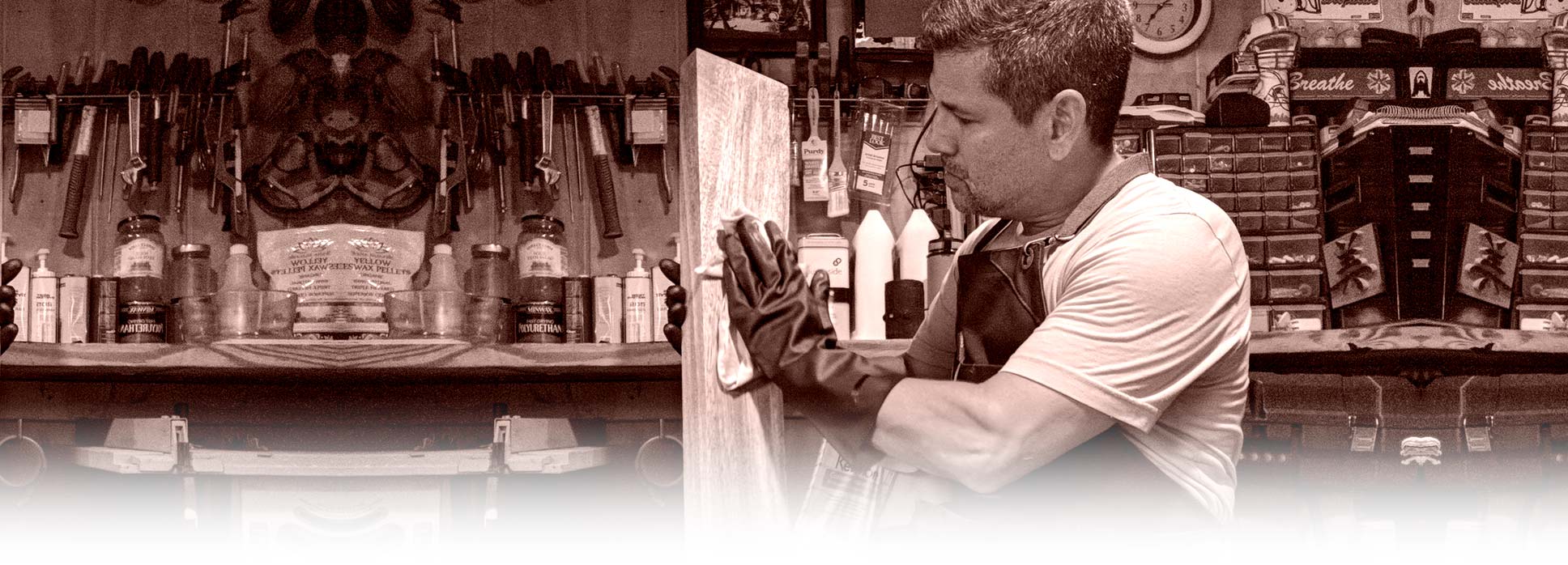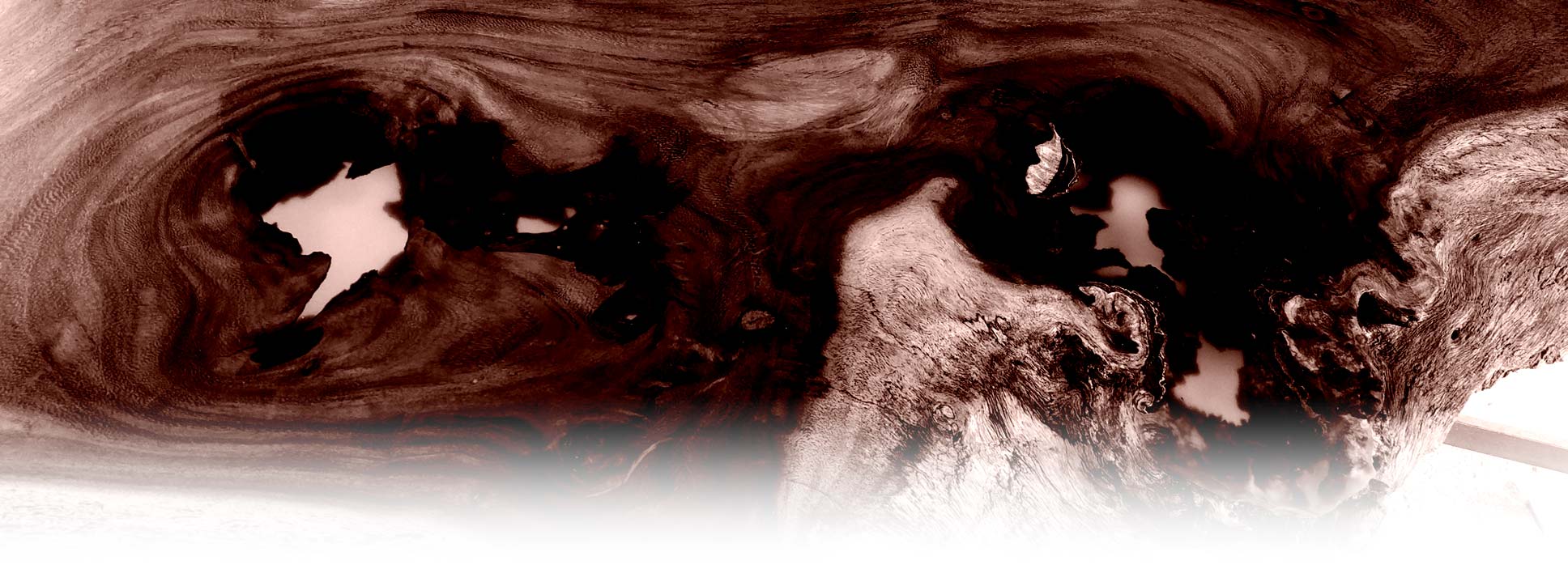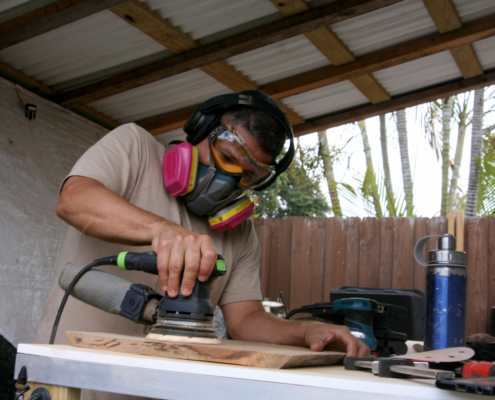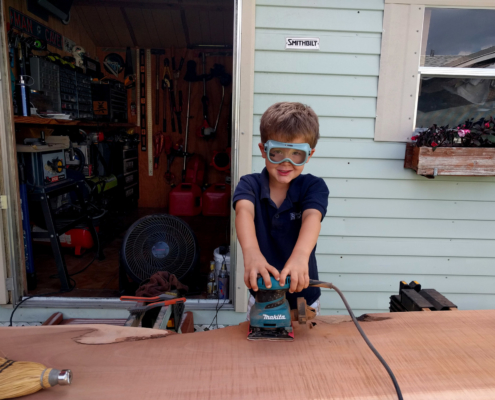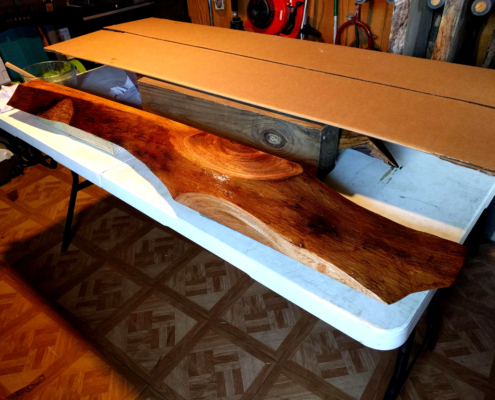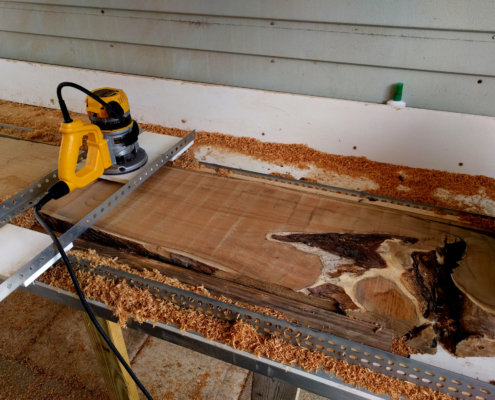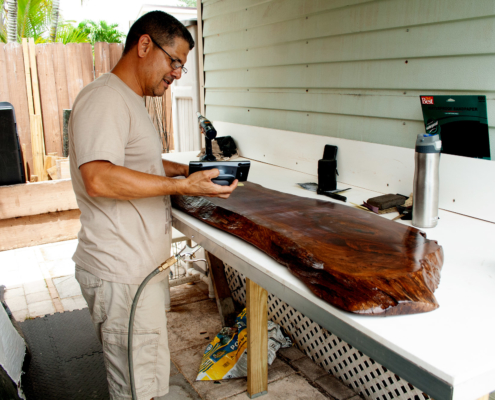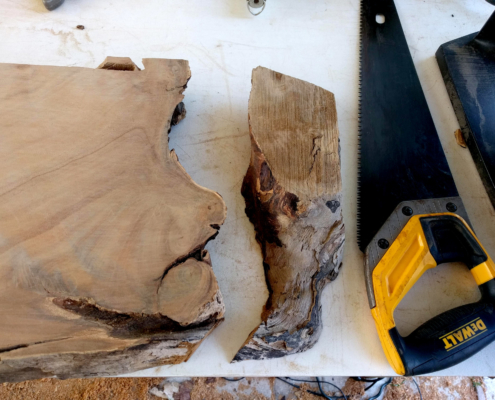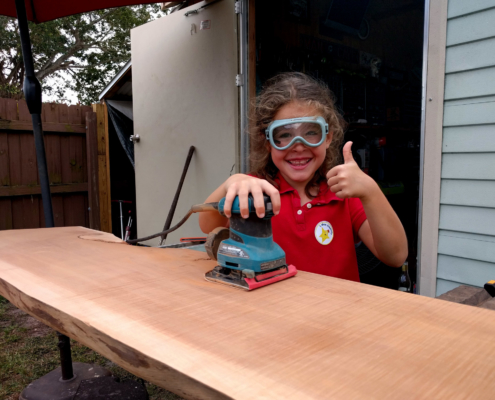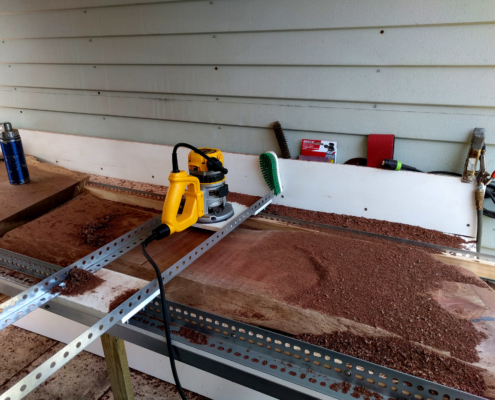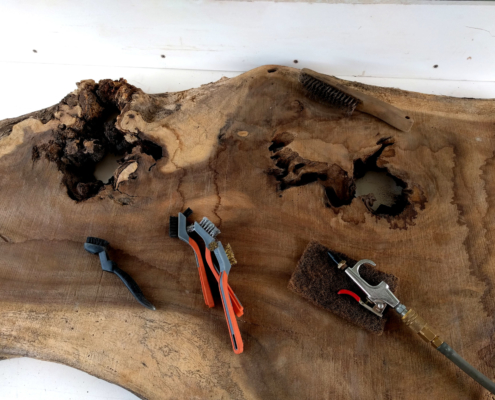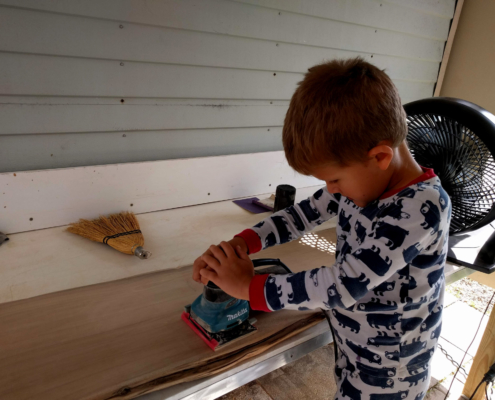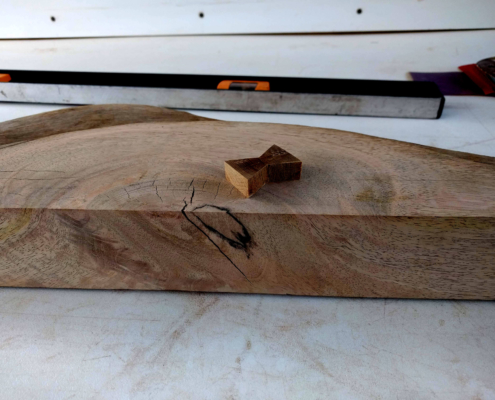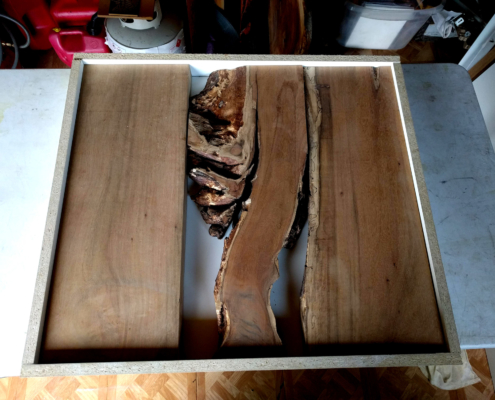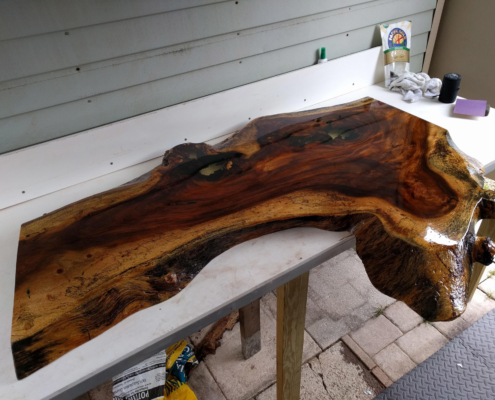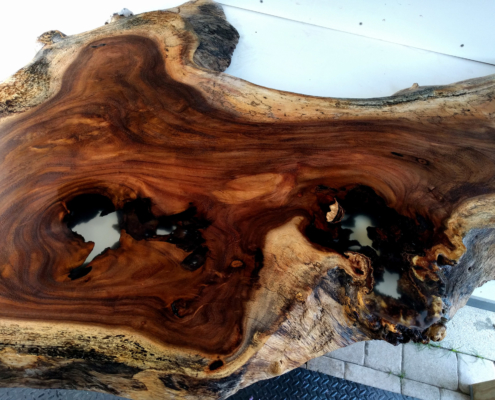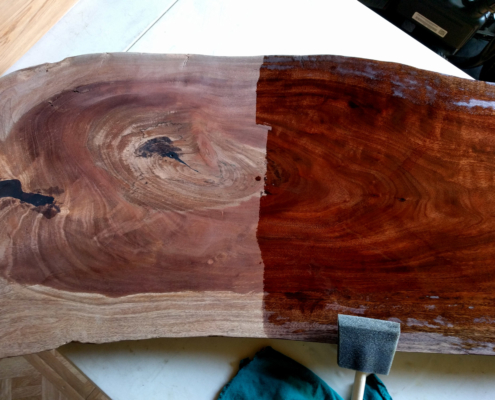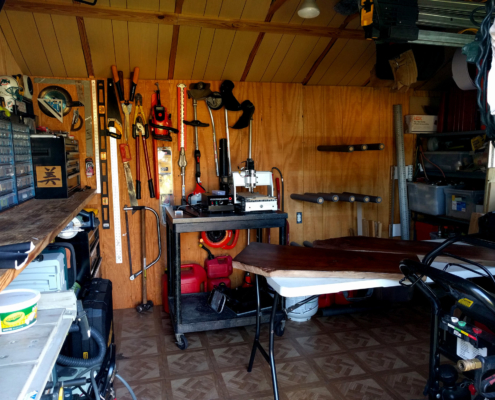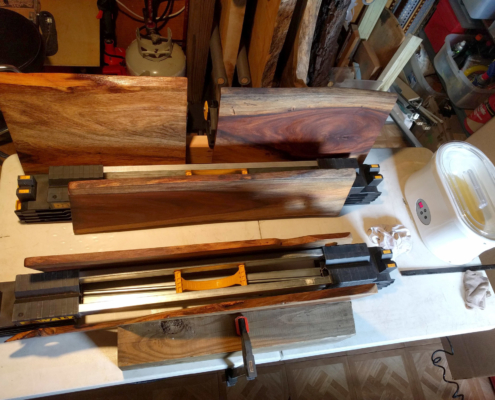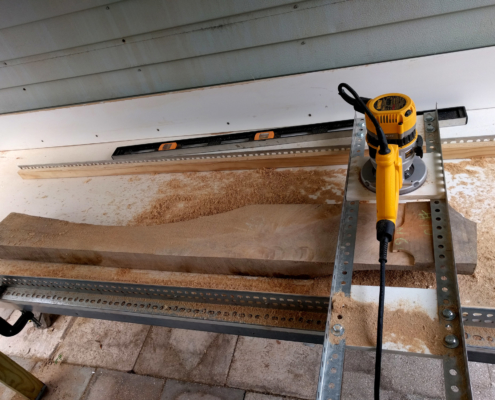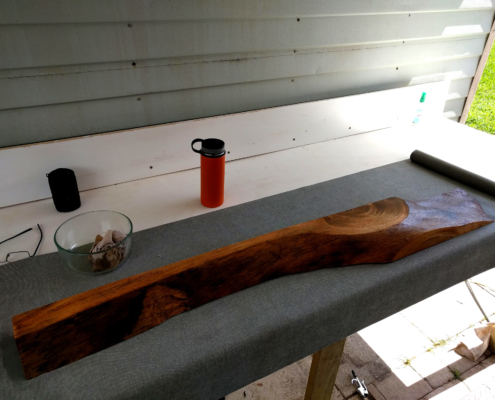SLAB SELECTION
I choose live-edge wood slabs using a variety of criteria. My first impression of a raw piece often generates feelings of awe and wonderment from its natural beauty, followed by excitement of potential, and upon touching it, a sense of humility upon my hands that begins the reverence I experience with each piece throughout my time with it.
Often, I seek wood species I may not have worked on before, to open the door to new woodworking experiences, while it is generally easier to pick an old favorite, or look for qualities expressed by a customer’s special request. In any case, I look for irregular shapes/cuts, voids, notable color and grain, and consider linear dimensions and thickness. Some species are dense or softer woods. Others possess outstanding live-edge features. All such criteria contribute to the final piece, whether driven by a customer’s vision or crafted by me on my path with the wood.


